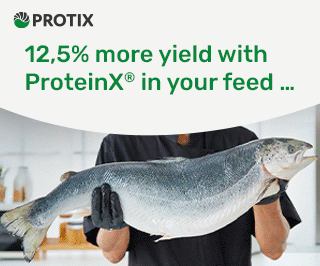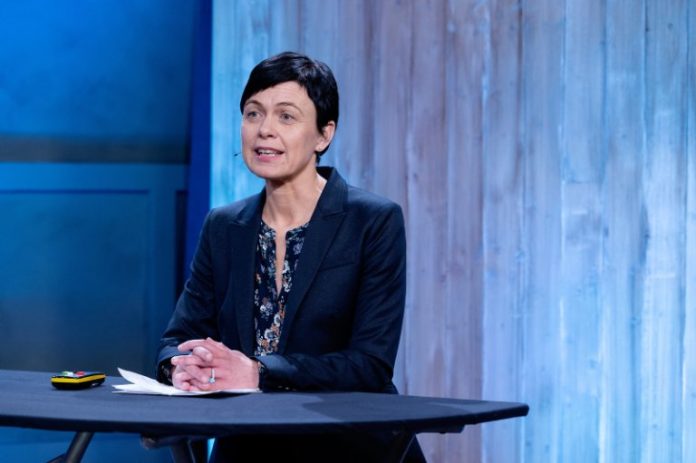Salmon farming mortality slightly declined in 2024.
In 2024, the mortality rate for farmed salmon in the seawater phase was 15.4%, down from 16.7% the previous year. According to monthly reports of losses, 57.8 million farmed salmon were registered as dead in the seawater phase in 2024. These figures have been reported by farmers to the Norwegian Directorate of Fisheries.
Several areas have seen a decline in farmed salmon mortality, while Production Area 6 (Nordmøre and Sør-Trøndelag) recorded a clear increase.
“The figures show that the increase in mortality we have seen in recent years fortunately did not continue in 2024. Whether this is the beginning of a new trend is too early to say, but we see that many farmers are working systematically with various strategies to reduce mortality,” said Ingunn Sommerset, Director of Fish Health and Welfare at the Norwegian Veterinary Institute.
The mortality rate (also referred to as mortality risk) for farmed salmon in the seawater phase, 15.4% in 2024, is approximately the same as in 2021. The number of dead farmed salmon in the seawater phase in 2024 was 57.8 million, down from 62.8 million in 2023, but still higher than in 2022. Changes in the 2024 data may occur due to late reporting, which could lead to minor adjustments in these overall figures.
The largest annual decline in mortality was seen in Production Area 2 (Ryfylke) and Production Area 3 (Karmøy to Sotra). Production Area 2 had a mortality rate of 22.4% in 2023, which decreased to 12.2% in 2024 (a change of -10.2 percentage points), while Production Area 3 had a mortality rate of 25.7% in 2023, which fell to 17.5% in 2024 (a change of -8.2 percentage points). Production Area 6 (Nordmøre and Sør-Trøndelag) had the highest mortality rate in 2024 at 22.4%, up from 16.3% in 2023.
Production Area 4 (Nordhordland to Stadt) had a mortality rate of 20.2%, slightly up from the previous year. The production areas in Northern Norway mostly saw a slight decline, but in Production Area 11 (Kvaløya – Loppa) the rate increased from 9.8% to 10.2%, and in Production Area 12 (Western Finnmark) it rose from 12.7% to 14.2%.
“It is too early to say whether last year’s decline marks the beginning of a new trend,” said Ingunn Sommerset, Director of Fish Health and Welfare at the Norwegian Veterinary Institute.
The Veterinary Institute uses a well-documented and established method to calculate annual mortality. This is done by determining an average monthly mortality rate, which is then aggregated into an annual rate. This can be converted into annual mortality risk, expressed as a percentage. The method accounts for variations in the number of fish in pens throughout the year, providing an accurate picture of the situation at farms during the period and serving as a reliable indicator of fish health and welfare.
“What lies behind the 2024 mortality figures and other factors affecting the health and welfare of Norwegian farmed fish will be further examined in the Fish Health Report,” said Sommerset.
The Fish Health Report will be presented at the FriskFisk Conference in Tromsø on 11 March.
Annual mortality rate (%) for farmed salmon (seawater phase) by production area
| Production Area (P.O.) | Geographic Area | 2024 | 2023 |
|---|---|---|---|
| 1 | Swedish border to Jæren | 19.2% | 7.7% |
| 2 | Ryfylke | 12.2% | 22.4% |
| 3 | Karmøy to Sotra | 17.5% | 25.7% |
| 4 | Nordhordland to Stadt | 20.2% | 17.9% |
| 5 | Stadt to Hustadvika | 16.7% | 16.9% |
| 6 | Nordmøre and Sør-Trøndelag | 22.4% | 16.3% |
| 7 | Nord-Trøndelag with Bindal | 14.4% | 11% |
| 8 | Helgeland to Bodø | 11.6% | 17.6% |
| 9 | Vestfjorden and Vesterålen | 9.1% | 13% |
| 10 | Andøya to Senja | 12.2% | 13.8% |
| 11 | Kvaløya to Loppa | 10.2% | 9.8% |
| 12 | Western Finnmark | 14.2% | 12.7% |
| 13 | Eastern Finnmark | 4.1% | 5.3% |



